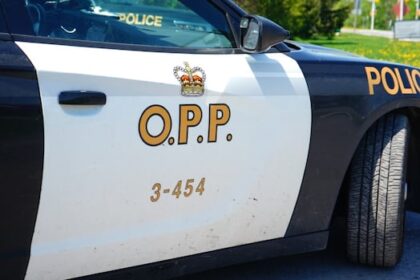Toronto·NewChristmas trees are a long-running tradition for many, but modern-day circumstances are slowly transforming the tree farming industry. For consumers, the big question is whether a real tree or an artificial one is more environmentally friendlyTyler Cheese · CBC News · Posted: Nov 28, 2025 4:00 AM EST | Last Updated: 30 minutes agoListen to this articleEstimated 4 minutesThe audio version of this article is generated by text-to-speech, a technology based on artificial intelligence.How Christmas tree farmers are adapting to climate change and rising costs The cost of living and increasingly unpredictable weather are among the top challenges facing Christmas tree farms. CBC’s Tyler Cheese spoke to the owners of one Ontario farm on how they’ve adapted.Christmas trees are a long-running tradition for many, but modern-day circumstances are slowly transforming the tree farming industry. Increasingly unpredictable weather is one of the biggest challenges Michael Cormack faces on the Christmas tree farm he owns and operates one hour north of Toronto in Goodwood, Ont. His grandfather started the business back in the 1950s.“Mother nature is a big, big factor in the business,” Cormack told CBC Toronto. “This year in July, we were averaging over 29 C. So we had trees from two to three years ago that just died. … Four years ago, we had a tornado here that wiped out a bunch of our stuff.” Michael Cormack is a third-generation Christmas tree farmer. (Rob Krbavac/CBC)That’s just one of the issues changing how local Christmas tree farmers operate. Another major factor is the cost of living crisis. Cormack said he’s noticed fewer young couples and small families visiting his farm in recent years, with more multi-generational families seeming to share one tree together. WATCH | How to grow a Christmas tree:What goes into growing Christmas trees Christmas is still months away, but Christmas trees don’t just magically appear. Someone has to grow them. Peter Kappeler of Fir Ever Green Tree Farm gives CBC a tour of his holiday crop.High cost of land is also having an impact on the industry, said Kelsey Leonard, founder and director of the Christmas Tree Lab at the University of Waterloo. She said it’s one of the reasons the industry is having trouble attracting young farmers. “Right now many of the farms are owned by elderly growers, and they’re aging out. So we’re losing a lot of farms year after year, which is unfortunate,” Leonard said.Real or artificial: Which is more eco-friendly?U.S. tariffs are also likely to have an impact on the costs associated with growing Christmas trees this year, Leonard said, especially when it comes to buying equipment. But she says the full impact won’t be known until after the holiday selling season. The years-long debate around whether real trees or artificial trees are more environmentally friendly is also at issue in the industry — though most experts now say the overall carbon footprint of real trees far outweighs the benefits of artificial ones. “A lot of artificial trees are some type of plastic byproduct, which is a product product of fossil fuel consumption,” Leonard said. “Then you have to think about the carbon footprint of the shipping that’s required for that artificial tree.” Experts say U.S. tariffs are likely impacting the Christmas tree industry by raising costs on equipment, but the full extent won’t be known until after the holidays. (Rob Krbavac/CBC)Some people opt to keep artificial trees for as long as possible to try to offset their carbon footprint, but that takes about 20 years of use, according to the David Suzuki Foundation.“Most people are not keeping those trees that long,” Leonard said. “You’re lucky if you get someone who holds their artificial tree for more than two years. They kind of become a fast fashion fad almost.” WATCH | Real or fake, that is the question:Real or fake? Christmas tree debate has a new contender: climate changeNew research from the University of New Brunswick shows balsam firs are at risk of being harmed by climate change. Buying a real tree from a local farmer is the most eco-friendly option, Leonard said, while acknowledging some people still prefer artificial trees for reasons like allergies or condo requirements. Get as much use out of artificial trees as possibleContinuing to use an already purchased artificial tree is also a more eco-friendly choice than buying a new natural tree, Leonard said. But she advises putting the effort in to get the most you can out of its life cycle. “Try and find ways to repurpose, reuse and recycle it,” she said. “If the lights [burn out], re-string it with other types of lights … And then when you do go to dispose of that tree, really be conscientious about where it’s going.” For those who require an artificial tree, there are now some eco-friendly artificial options made using more recycled materials or plant-based plastics.As for those concerned about the environmental impact of cutting down thousands of trees every year, it’s helpful to think about them as a crop, Cormack said. “Every year that we cut one, we usually plant two or three,” he said. “It’s just like a corn crop. We plant it every year. We replenish it. So it is definitely healthier for the environment.”Cormack feels public sentiment has swayed back in favour of real trees after a brief period when artificial trees were seen as the greener option. He also noted that, since the pandemic, people seem to be embracing the holiday spirit earlier and earlier each year. “Our big weekend used to be like the 15th of December and now it’s pushing into November.”ABOUT THE AUTHORTyler Cheese reports on local and provincial news in Toronto and the GTA. You can contact him at tyler.cheese@cbc.ca or @TylerRCheese on X.
Friday, 28 Nov 2025
Canada – The Illusion
Search
Have an existing account?
Sign In
© 2022 Foxiz News Network. Ruby Design Company. All Rights Reserved.
You May also Like
- More News:
- history
- Standing Bear Network
- John Gonzalez
- ᐊᔭᐦᑊ ayahp — It happened
- Creation
- Beneath the Water
- Olympic gold medal
- Jim Thorpe
- type O blood
- the bringer of life
- Raven
- Wás’agi
- NoiseCat
- 'Sugarcane'
- The rivers still sing
- ᑲᓂᐸᐏᐟ ᒪᐢᑿ
- ᐅᑳᐤ okâw — We remember
- ᐊᓂᓈᐯᐃᐧᐣ aninâpêwin — Truth
- This is what it means to be human.
- Nokoma












